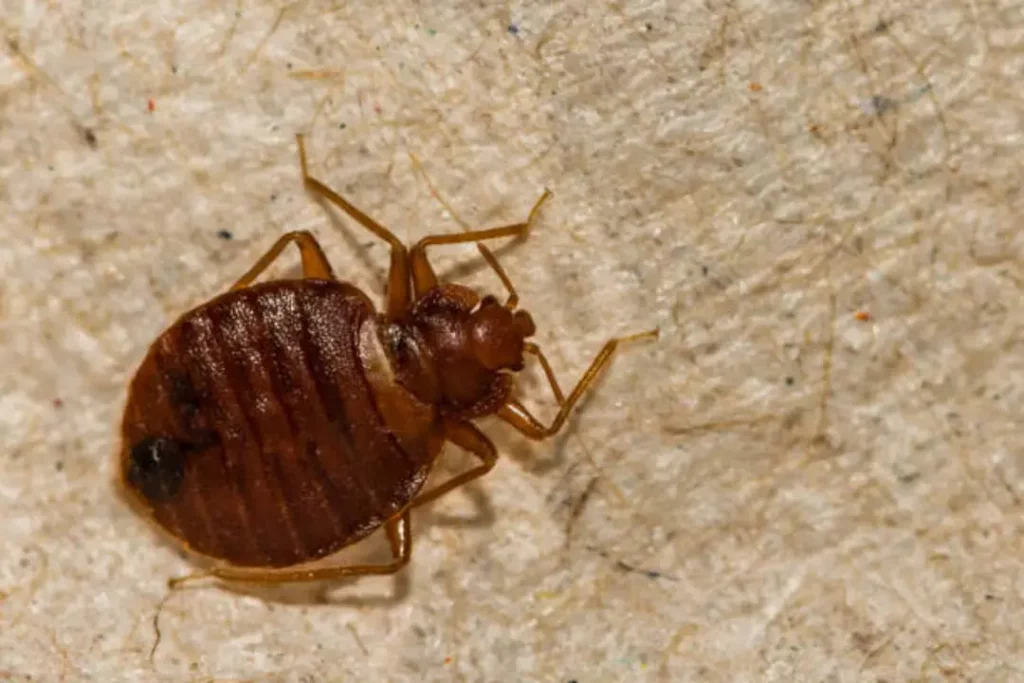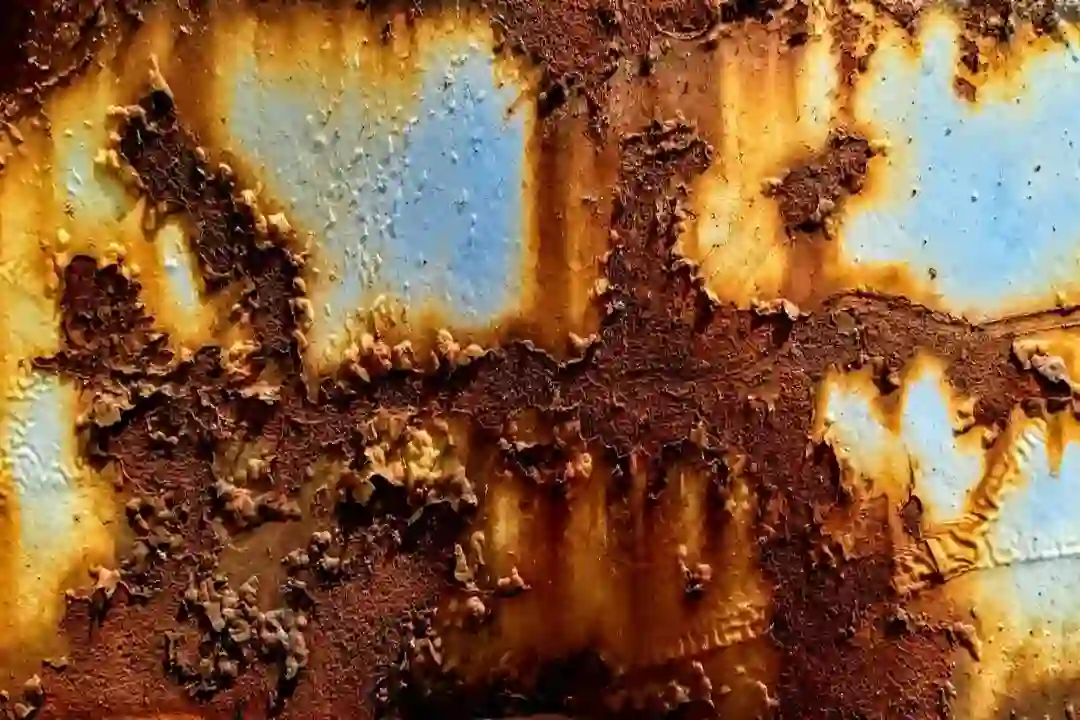Do you have bed bugs? If so, don’t worry! You’re not alone. Bed bug infestations are becoming more and more common in the United States. As a homeowner, it’s your job to find the quickest way to get rid of these pests, but that can be tough when you don’t know what they’re doing or where they’re hiding.
Don’t worry- we’ve got you covered with some helpful hints on how to get rid of bed bug stains quickly and easily while protecting your home from future infections.
What to Consider First?

Remember that if there is a stain on one side of the mattress but not on the other side, there’s a good chance it’s just sweat from sleeping in an awkward position all night long instead of being caused by bed bugs.
Look for the signs of bed bugs in your mattress and surrounding furniture. If it’s infested, you’ll probably see dark spots near where your mattress meets the wall or headboard and possibly even on other parts of your bedroom furniture like nightstands and dressers.
Some stains may look like dead skin cells (which isn’t surprising if you have an infestation) but are actually tiny, rust-colored spots that are the dried droppings of bed bugs.
It’s normal to see harmless stains caused by dead skin cells on your mattress, especially on the headboard, where you’re more likely to sleep with your face smashed against it. Just clean these areas regularly if you want to stop them from persisting.
How to Clean Bed Bug Stains on Clothes?

Bed bugs are parasitic small insects that feed on the blood of humans and animals. Because they need to suck blood for food, bed bugs can be found in mattresses, blankets, and clothes.
Stains caused by bed bug droppings (feces) are almost invisible to the naked eye, but they could certainly make your clothes look dirty and unhygienic. Different methods can be used to clean bed bug stains on clothes. These include: spot treating, washing, and dry cleaning; each is explained in detail below.
Make sure you use the appropriate method for your clothes, otherwise the stains may become permanent. Of course, if you are not careful while performing these steps, you could make the stains worse.
The equipment, tools, and materials to be used for each method are shown below:
Spot treating: a bucket of water, laundry detergent, stain remover or pre-soak product, clothesline or hanger, ironing board (optional), and iron.
washing: washing machine and laundry detergent.
Dry cleaning: specialist dry cleaning products and a local dry cleaner.
1. Spot Treating
Use this method to treat stains before they set in or if you can’t wash your clothes straight away. Here’s what to do:
- Mix one part laundry detergent with four parts water in a bucket.
- Dip a pre-soaked product in the mixture. A pre-soak product is better at breaking down dirt and oil stains to make them easier to wash out. You can use a regular detergent instead of pre-soak, but make sure it has enzymes; enzymes help break down proteins and fats, which are stains that come from body oil and dirt.
- Dip the stained fabric into the bucket. Leave it for a few minutes before pulling it out of the water.
- Rinse out your clothing with clean, running water to remove any soap residue.
- If the stain is still visible after spot treating, rub a stain remover directly on the stained area. Removing stains is easier with liquids or gels than with powders or sprays because they’ll give you more control over the amount of product that goes onto your clothing.
- After brushing off any excess dirt with your hands, hang up the clothes to dry.
2. Washing
This method is best if the stains are quite old or set in, but it could damage some types of clothes. Pre-treatment with stain remover does not work well with this method because any kind of pre-treating can leave a residue on your clothing that may attract dirt and cause the color to run off. Here’s what to do:
- Treat all stains with stain removers, gels, or liquids directly onto the stained fabric.
- Toss your clothes into your washing machine with your usual detergent and wash as normal. For best results, wash at 30 degrees Celsius. Hot water is too harsh on clothing fibers, so it should be avoided whenever possible.
- Hang your clothes to dry.
3. Dry cleaning
If you really want to get rid of bed bug stains on clothes, then dry cleaning is the best option. That being said, it may not be practical for everyday clothing because it’s quite expensive. Dry cleaners use chemicals that are very powerful at breaking down dirt and oil stains. Here’s what to do:
- Find the nearest dry cleaner in your area. Make sure it specializes in cleaning clothes, not carpets or curtains.
- Take your clothes to the dry cleaner. They should clean all types of clothing, but remember that this method will be more useful for heavy stains caused by body oils and dirt than for older stains that have already set in.
- Inspect your clothes. If the bed bug stains are still visible, return to the dry cleaner and ask them to do another round of cleaning.
The methods, tools, and materials required for each method will depend on the type of fabric you want to clean. For example, if you are planning to use the method of spot treating, you only need the things mentioned above.
How to Clean Bed Bug Stains from Carpets?

Different methods are used to remove bed bug stains from the carpet. You can use steam cleaning or dry cleaning for this purpose.
Dry Cleaning Method
First, vacuum over the affected area using a crevice tool attachment to get rid of any loose hair and fluff. Then place double-sided tape over the remaining stains. Cover the stained area with stain remover spray or enzyme cleaner, and use an old toothbrush to scrub over the affected area.
The tape will act as a ‘cheese-wire’ to lift any remaining stains from carpet fibers. When the stained area has dried, vacuum thoroughly over it once again. You can also try using white bread as the tape.
Cut two slices of bread and place them over the stains. Place one slice on top of the other to create a clean, sealed sandwich bag that will be held in place using the carpet fibers.
Steam Cleaning Method
Fill a steam cleaner with lukewarm water and mix in a small amount of detergent. Turn the cleaner on and hold it over the stains. Apply more detergent if necessary. Change the steam-cleaning solution if required.
Carpet Cleaner Method
One of the most common ways to clean bed bug stains from carpet is by using a quality carpet cleaner. You can either purchase a commercial-strength cleaner or mix your own in a spray bottle.
To use an at-home mixture, just combine warm water with some dish soap and add a little bleach. This mixture should be effective on almost all types of stains.
Then just spray it onto the stain and allow it to dry naturally; you don’t want to rub or scrub the spot because you might spread the stain further into the carpet yarns.
Steam Cleaner Method
Almost like using a commercial strength cleaner, you can also use a steam cleaner to remove the bed bug stains from your carpet.
By using the highest heat setting on your machine, you can create very hot steam that will kill the bed bugs and cleanse the area. After allowing the area to dry naturally, it will be safe for you to vacuum or have your carpets professionally cleaned if needed.
Enzyme Cleaner Method
There are specific enzyme cleaners that you can buy for removing bed bug stains from carpets. These cleaners use natural enzymes to break down the proteins of the bed bug exoskeleton, which will dissolve it and make it easier to clean up.
Using a solution of warm water, add a few drops of the enzyme cleaner and then apply it to the stain. Allow a few minutes for the enzymes to take effect and then blot up the excess moisture with a clean, white absorbent cloth. You can brush or vacuum the area when you are finished.
Insecticide Method
Using your own insecticides will not be effective against bed bug stains because they are too hard to kill.
But if you have an exterminator in your area that uses insecticides, it might be worth the call to see if they can come out and treat your home for bed bugs. Insecticides will not only kill the bed bugs on your carpet, but also in other areas of the house where they might be hiding.
Bed Bug Removal Method:
If none of these methods work for you or if you don’t have time to do them, then you might want to consider calling in a professional. Removing bed bug stains from carpets isn’t the only thing that they are good at.
These professionals are trained to find out where exactly your pest problem is coming from and get rid of it quickly using some of the methods mentioned above. They also know what types of chemicals to use to prevent future infestations.
Check out our blog for more articles.
How to Clean Bed Bug Stains from Dry-Clean-Only Fabrics?

Do you have dry-clean-only garments that are infested with bedbugs? Don’t worry! It’s possible to remove bed bug stains without damaging your fabric. This article will teach you how to remove bed bug stains from dry-cleaned fabrics using some simple items found at home.
You will need:
- A lint roller or tacky roller (to move the bed bugs to a different location)
- Rubber gloves
- Paper towels or clean fabric rags
- White vinegar
- Spray bottle
- Damp washcloth and dry towel (optional)
Procedure:
- Use a lint roller or tacky roller to remove as many bed bugs from the fabric as possible.
- Put on rubber gloves and gently wipe the bed bugs with a damp washcloth or towel. You can also spray white vinegar directly on the stain to kill more of the bedbugs. Make sure not to soak the fabric with the liquid, as this may damage it too much and make it difficult to remove stains from dry-clean-only fabrics.
- After removing the bed bugs, allow the fabric to dry thoroughly before attempting to clean it to avoid accidental damage from the heat of a dryer or iron.
- Spray a small amount of white vinegar directly onto a paper towel or rag and rub down any remaining stains. If you’re lucky, the bed bugs will be gone and you don’t need to worry about further cleaning.
- If the stains still remain, dampen a clean rag or cloth with cold water and rub down the fabric once more. If this also doesn’t remove the stain, it’s possible that your dry-clean-only garment has been permanently bleached by the bedbugs. I’m sorry to say that, at this point, your best bet is to take it to a dry cleaner and ask for professional help.
Don’t Forget: It’s important that you treat all of your garments before wearing them again. This will prevent new bed bugs from infesting the fabric and staining the clothes once more. If you have any questions or need further help, please leave a comment below.
Read here for more information on how to identify bed bug stains.
Final Thoughts
Bed bugs are a major problem for many people. They can infest not only your bedding but also other areas of the house where they might be hiding.
Getting rid of them is often difficult and time-consuming because you have to treat both sides of the fabric to get rid of stains from dry-clean-only fabrics or remove residuals that remain after vacuuming carpeting with insecticide. Fortunately, there are some methods that you can use at home to make this process easier for yourself.
Whether it’s using products found at the hardware store, hiring professionals who know how to detect and eliminate pests quickly, or simple techniques like wiping down stained garments with vinegar before drying them out thoroughly – all these steps will help keep bedbugs away for good. Thanks For Reading!








